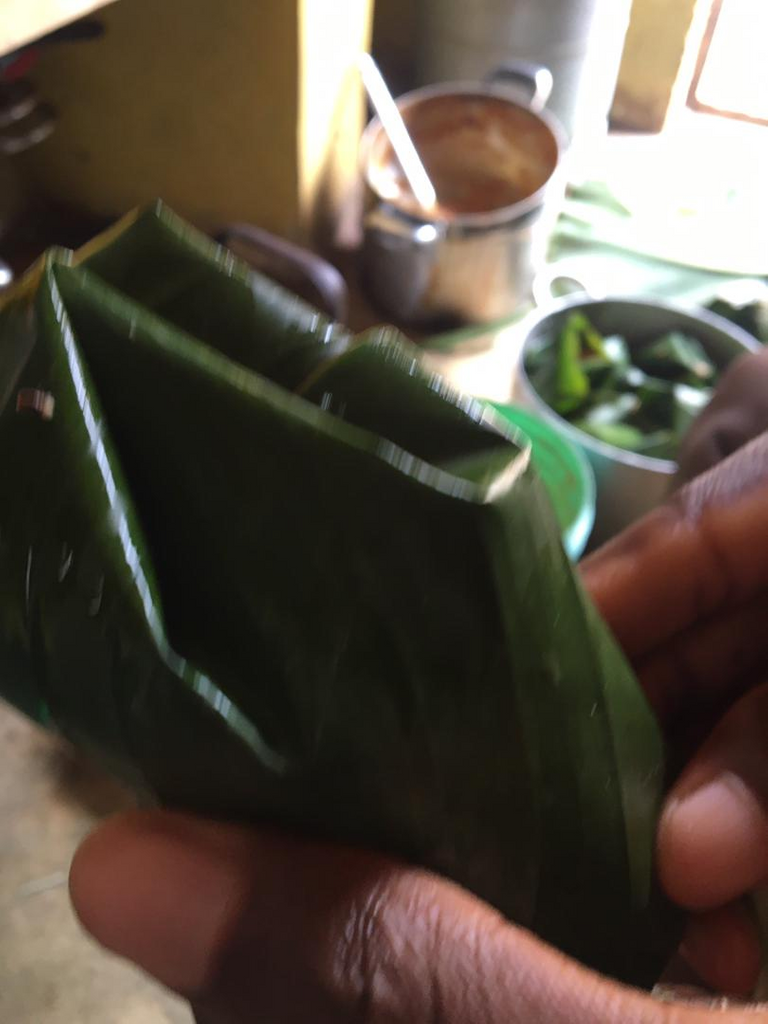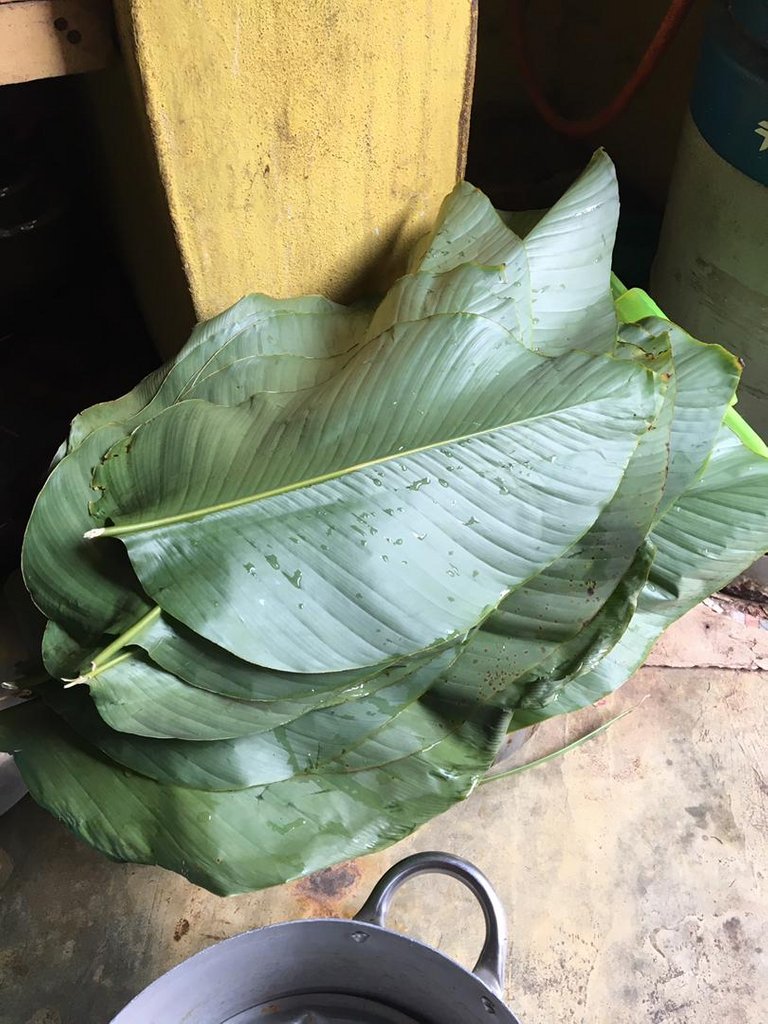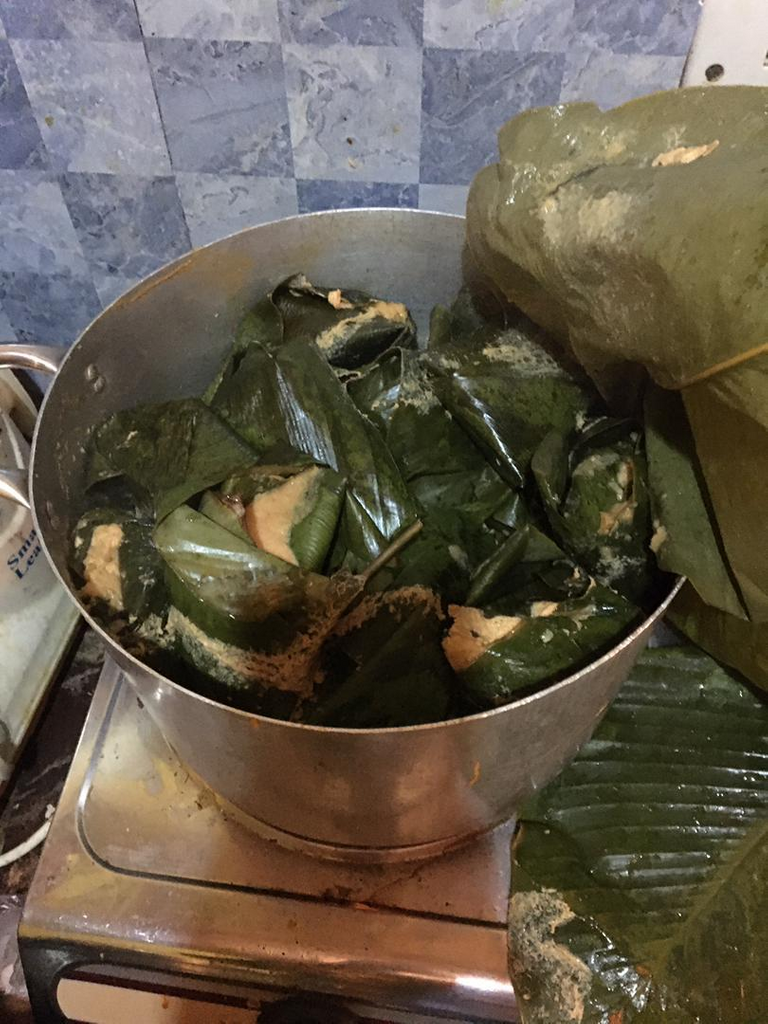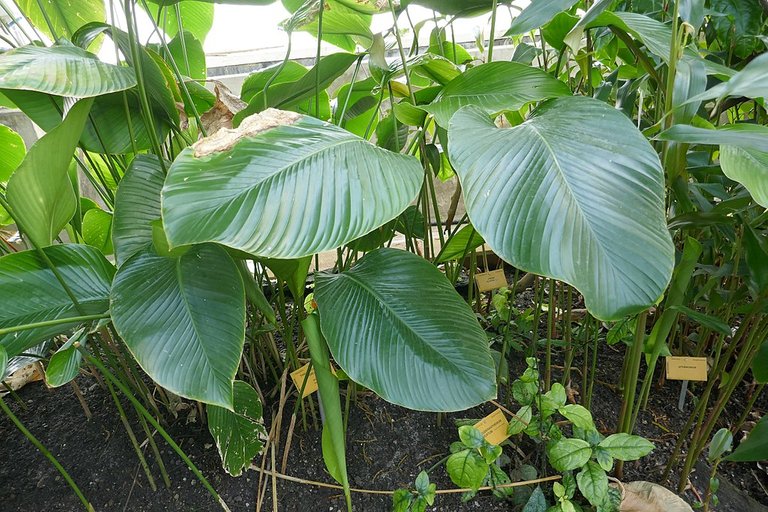For almost 6 months now, you will find me in a neighbourhood market, about 2 kilometres away from my crib, virtually every Friday. Even I often end up buying some other things, I go there primarily to buy a particular leaf.
Now, one might begin wondering what is the bid deal with just a leaf so much so that it has become a weekly ritual for me to visit the market because of it. And no, I do not eat this leaf. I only use to package one of my favourite foods locally known as 'moin moin' whose English name has been coined as 'bean pudding'.


Just from the English name, one can easily extract, and will follow logically, that the food is made from beans - Vigna unguiculata. The grains of the beans are first soaked in water for a few minutes after which the outer coverings are removed - the chaff. Peppers, chillis, ginger, and onions are then added to the beans and then milled together to form a thick paste.
A little groundnut oil (depending on the quantity of beans ground) is then added to the paste and other optional ingredients such as powdered crayfish, seasoning, boiled egg or fish, etc. are then added in commensurate quantities. Thereafter, a little quantity of water is added and the mixture is stirred continuously for a few minutes until a homogenous mixture is achieved. Next would be to package the paste into several small packages and then put everything inside a water-containing pot before allowing it to boil on fire for 30 to 45 minutes.
The packaging part is where the leaf has turned me into a weekly visitor of my neighbourhood's market. Of course, there are a few options available when it comes to the packaging of bean pudding before boiling, depending largely on what is available and perhaps, the taste of the cook. Many people prefer to package theirs in small nylons before boiling. The problem with nylon packaging is that some of the bean pudding ends up bursting into the boiling water, messing up the entire set-up and the final product.
There are also options for plastic or metal containers. The containers are carefully arranged in the pot, some on top of the others depending on the quantity being cooked. While metal containers are usually difficult to wash after eating the bean pudding, I stay away from plastic containers when it comes to cooking due to their carcinogenic potentials as reported in several scientific research.
The leaf packaging provides a somehow better, safer, and healthier option when compared to other available packages for bean pudding, although some people might argue this. The leaf is hundred percent organic and hence, no fear of being slowly poisoned by carcinogenic substances in plastic or nylon or heavy metal in metal packages. Not just that, the leaf also improves the organoleptic quality of the bean pudding itself. The only problem is that packaging the bean paste into the leaf is a special kind of skill - which I have been able to master :).


What is this leaf?
The leaf I am talking about is locally known among we Yorubas as 'ewe gbodogi' which translates as 'gbodogi leaf' (sorry, I don't know the English of gbodogi). Some other Yorubas call it 'ewe eran', meaning, goat leaf. When it comes to we scientists though, the leaf is botanically known as Thaumaococcus danielli.
Here in Southwestern Nigeria, the leaf grows naturally as perennial herb without being cultivated. Only the people that knows its value go into the forest to harvest the leaves. It is popularly known for its use as packaging for foods, especially solid corn starch (eko in Yoruba) and moin moin (bean pudding).

Thaumatococcus danielli contains an intensely sweet protein known as thaumatin, this would explain how using it to package foods improves the organoleptic property of such foods. The plant belongs to the Marantaceae plant family and grows to about 3 to 4 meters in height. Apart from the leaves which are of economic importance to some of we locals, the plant produce fruits which also contain the sweet protein. Thaumatin actually has been of major interest to researcher and several attempts have been made to isolate the gene from the plant and insert it into the genomes of other plants of economic interest.
With all these attributes of Thaumatococcus danielli as a plant, each time I see the leaves, I know in my mind that those are not ordinary leaves.
Thank you all for reading.
türkiye'deki asma yaprağı yemeği gibi ama bizim yapraklarımız sizin yapraklarınızdan küçük bu değerli bilgi için teşekkürler..:)
The rewards earned on this comment will go directly to the person sharing the post on Twitter as long as they are registered with @poshtoken.
This is a very interesting article about ewe gbodogi and how you use it to package moin moin @gentleshaid, I enjoyed learning about it.
You raise a great point as well about the dangers of using chemically based containers. This is something I often think about, because the use of them is heavy over here in America.
I hope to try that moin moin one day, thank you for sharing!
Indeed. Many people do not take cognizance of the danger in using chemical-based packages for their foods. Maybe because the effect is not always immediate because the chemicals bioaccumulate within the system for some time before the effects start manifesting. You will definitely enjoy the moin moin, trust me.
Thanks for your contribution to the STEMsocial community. Feel free to join us on discord to get to know the rest of us!
Please consider supporting our funding proposal, approving our witness (@stem.witness) or delegating to the @stemsocial account (for some ROI).
Please consider using the STEMsocial app app and including @stemsocial as a beneficiary to get a stronger support.